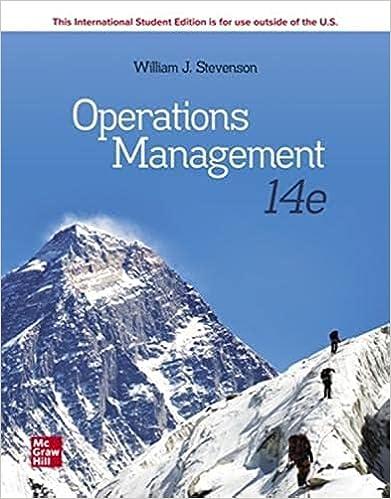This type of problem can be recognized when a list showing prices for each quantity range is
Question:
This type of problem can be recognized when a list showing prices for each quantity range is given along with the basic EOQ information.
a. If unit holding cost is constant, use these steps to solve the problem:
1. Use Formula 12–2 to find Q.
2. Locate Q in the price schedule.
3. Compute the total cost using Formula 12–1 for the quantity range that Q falls in and the total cost for all lower-cost price breaks.
b. If unit holding cost is a percentage of unit price, use these steps to solve the problem:
1. Beginning with the lowest cost, and using the corresponding H for that cost, compute Q using Formula 12–2. Continue moving up in unit cost until a feasible Q is found.
2. Locate the feasible Q in the price schedule.
3. Compute TC using Formula 12–9 for Q and for all lower-cost price breaks. Remember to use the corresponding H for each price.
A small manufacturing firm uses roughly 3,400 pounds of chemical dye a year. Currently, the firm purchases 300 pounds per order and pays \($3\) per pound. The supplier has just announced that orders of 1,000 pounds or more will be filled at a price of \($2\) per pound. The manufacturing firm incurs a cost of \($100\) each time it submits an order and assigns an annual holding cost of 17 percent of the purchase price per pound.
a. Determine the order size that will minimize the total cost.
b. If the supplier offered the discount at 1,500 pounds instead of 1,000 pounds, what order size would minimize total cost?
D = 3,400 pounds per year S = \($100\) per order H = .17P
Step by Step Answer:







